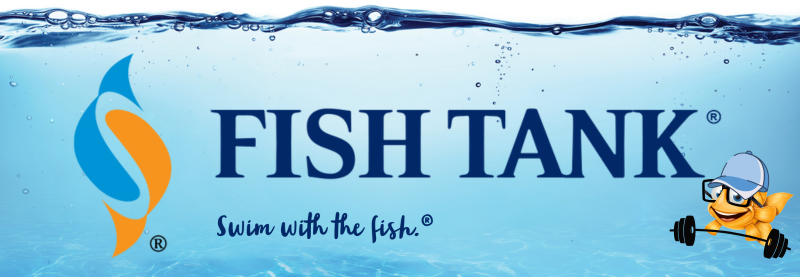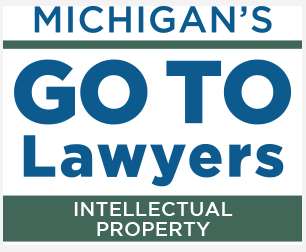Intellectual Property Insights from Fishman Stewart PLLC
Newsletter – Volume 24, Issue 21
Share on Social

Crayola’s Crayons Pass the USPTO Smell Test
Imagine opening a brand-new box of 64-color Crayola Crayons. Take a whiff. No matter how or where or when you grew up, this is a scent you know. We all know.
But is that enough to obtain a US federal trademark registration? The United States Patent and Trademark Office (“USPTO”) said yes to Crayola on July 2, 2024, granting the company US Federal Trademark Registration No. 7,431,203 for a sensory mark directed to the smell of its crayons. The registration certificate states that a Crayola crayon “consists of a scent reminiscent of a slightly earthy soap with pungent, leather-like clay undertones.”
Produced since at least 1905, with 3 billion Crayola® crayons manufactured yearly, children world-wide have scribbled with them on paper, walls, and coloring books. A specimen had to be mailed into the Trademark Office so that the examining attorney could smell the crayons since the electronic photo (shown below) provided with the filing could not convey the sensory impression that Crayola wished to register.
Crayola provided a wide range of advertisements, third party articles, and even declarations of subject matter experts such as Crayola’s Technical Advisor for Regulatory, Intellectual Property, and Product Research, who has a Ph.D. in Organometallic Chemistry. In turn, the declarations included a wide range of evidence such as spectroscopy charts and color marks applied to substrates of paper that were intended to support Crayola’s attempt to register the smell.
In response, Crayola admitted that their crayons, like other competitors’ crayons have the same ingredients as crayons sold by other companies including paraffin wax, pigments, stearic acid, and optional fillers. Crayola also acknowledged that their crayons are the same in formulation as competitors’ crayons. All crayons are manufactured by weighing these ingredients in a typical crayon formula that is more-or-less consistent across the industry: melting and mixing the paraffin wax, filler, pigments and stearic acid; pouring the molten mixture into crayon molding devices; cooling the mixture in the molds; and ejecting the cooled, molded mixture from the molds.
It then stated, however, “in the interest of protecting its trade secret while at the same time wishing to comply with the USPTO’s request,” that the sensory mark—the Crayola® smell—“present in its finished products occurs as part of a proprietary ‘special step’ resulting from the unique manner in which Applicant stores, melts and combines the base ingredients at certain temperatures and frequencies.”
After much back and forth including an intervention by the Director of the United States Patent and Trademark Office, and then restoration of jurisdiction back to the trademark examining attorney, the mark was finally registered.
While the registration took place too close for this year’s back-to-school season, Crayola’s Chief Executive Pete Ruggiero imagines one day pumping the smell through the aisles of retail stores, triggering nostalgia and the buying of more crayons.
Do you think that Crayola® crayons have a distinctive smell different from that of other crayons or do you think that its crayons smell the same as other brands of crayons?
We welcome your opinion by way of a single question survey that can be found here:
https://www.linkedin.com/feed/update/urn:li:ugcPost:7237624167502659585/
The poll results can be reviewed in real-time, and we will share the outcome in an upcoming newsletter. In the meantime, happy coloring!
Michael Stewart is a founding member of Fishman Stewart. He has worked in a wide range of technical areas including information technology, e-commerce, telecommunications, and mechanical, aerospace, computer, and nuclear engineering. His practice includes domestic and foreign patent prosecution, e-commerce and information technology, patent opinions, intellectual property litigation, domestic and foreign trademark prosecution, trademark opinions, copyrights, trade secrets, rights of publicity, intellectual property evaluations/due diligence and drafting and negotiating technology and intellectual property agreements. Check out his full bio here.

Related Content from Fishman Stewart
People have long pondered whether or not the Giza pyramids were indeed solely burial chambers, which was the only known, and archaeologically determined, use—until now.
As the story goes, Klein was so taken with the indescribable blue of the sky over the Mediterranean in Nice, France, that he dedicated his artistic talent developing a blue that would imbue the canvas with this color in its purest form.
Despite her pseudo-legal background in Suits, Meghan has been running into one issue after another in her efforts to register the trademark and logo for her new lifestyle company, for now, called “AS EVER”.
By 1930, efforts began in New York to replace Mother's Day with Parent's Day because men were more than just breadwinners. Those efforts didn't catch on, probably because in that era, women often spent more time in the home.
In February, Nike and Skims announced that they will be working together on a new brand, NikeSkims. The co-brand will create a new line of training apparel, footwear, and accessories specifically designed to meet the unique needs of women athletes.
Generally, federal courts have exclusive jurisdiction over copyright cases, and often, this presents an insurmountable paywall for individual artists and small businesses to vindicate their rights, especially where the value of the individual copyrighted works are relatively low.
Dedicated to raising public awareness about the importance of encouraging innovation and creativity throughout the world, the World Intellectual Property Organization (WIPO) annually observes World Intellectual Property Day on April 26 to showcase the role that patents, trademarks, industrial designs, copyrights and trade secrets play in our everyday lives.
Hold onto your foam fingers, sports fans – college sports just got a whole lot more interesting! The latest updates to Name, Image, and Likeness (NIL) rules are making student-athletes bigger than ever, and it’s not just about the game anymore.
Did a federal court in Louisiana recently decide that US copyrights are global rights? It seems so.
L.A.B. Golf aims to protect its innovations, and therefore its market position, owning three patents for its zero-torque design. The question now is whether L.A.B. Golf can withstand the wave of copycat designs.
IDENTIFYING, SECURING AND ADVANCING CREATIVITY®



















